Shallow raceways save space, water
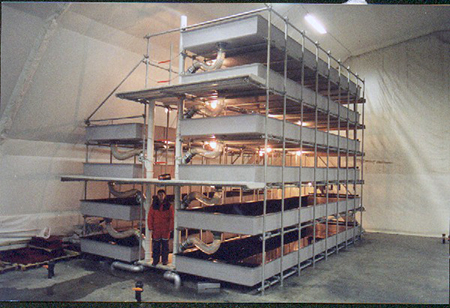
When attacked by predators like whales, many species of pelagic fish form dense aggregates. Many bottom fish respond to danger by hiding or digging into the sand. Keeping fish in captivity triggers some of these behavioral elements, so it seems sound to keep farmed fish species in dense schools. But these highdensity fish aggregations also represent new farming challenges regarding water quality and food distribution.
Shallow raceways
One way to deal with these new challenges is multipurpose use of the water itself. This can be implemented by using a shallow raceway system for fish farming. Eleven fish species, including Atlantic cod and bottom-dwelling species like Atlantic halibut, have already been tested in such systems in Norway. European turbot (Scophthalmus maximus), for example, have been raised in raceway tanks as shallow as 10 cm.
Water flow
In the turbot system, water enters the tanks and passes along their 30- to 60-meter length to the other end. The water supplies oxygen to the fish and removes metabolites and faeces continuously. With current speeds as low as 1centimeter per second, this one-way current promotes system self-cleaning with no disturbance to the fish population. Water quality reaches minimum levels at the end of the raceway, and facilitates accurate monitoring and adjustment of crucial parameters.
Food distribution
Water is kept very shallow so turbot can easily observe food particles moving by and respond by making short thrusts to snap pellets from the surface. Using floating food pellets facilitates self-cleaning and the water current effectively distributes food pellets over the full length of the raceway.
Successful results
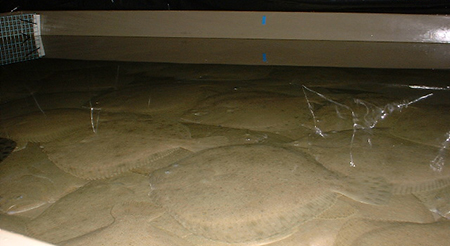
The shallow raceway system has been successfully used with turbot as small as 50 mg (wet weight, fish length 15 mm), as animals are forced to settle to the bottom when water depth is about 10 mm. Seen from the bottom, their small universe is convenient because food pellets pass by within their field of vision. Rapid growth without mortality has typically been observed in this system.
As fish grow, water depth and current speed are increased. However, for 1 kg turbot, a water depth of 10 cm and current speed of 5 to 10 centimeter per second are adequate. With the maximum recommended density of three layers of fish in the raceways, densities can be 50 to 60 kilogram per square meter, or about 500 kilogram per cubic meter. Logistics dictate the actual culture parameter to ensure high water quality to the last fish in the raceway.
Need for hyper-intensive systems
In principle, the size of the aquatic organisms farmed determines water depth, because water usually must cover their bodies. For the bottom-dwelling spotted wolffish (Anarhichas minor) now farmed in Norway, a 5-kg fish needs about 20 cm water depth just to have their heads covered. For turbot, shallower water depth is indicated.
Reducing production area
For young fish, tanks can be quite shallow. This makes it easy to stack the tanks in a rack system. With 10 cm tank height and 0.5 m between each level, racks of 10 levels are possible. Production area can be reduced to 10 percent of traditional farming systems using such hyper-intensive set-ups.
Other advantages
Water reuse is feasible through an efficient water rehabilitation system between levels. These farming systems can easily be self-cleaning, and self-feeding with an automated feeding system. They can also significantly reduce manpower demands.
Operation protocol
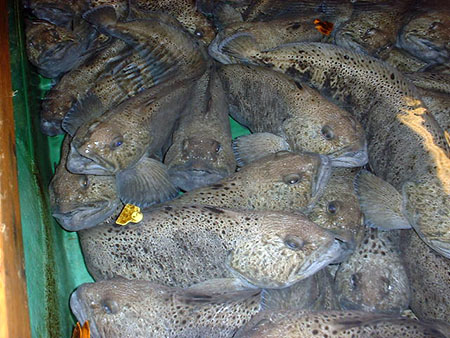
One of the main advantages of shallow-raceway production systems is that any parameter value can be easily calculated, which facilitates system design and operation. The system can be automated to run based on a few set values for crucial water-quality parameters.
One real operational challenge is that in this type of system, there is much less margin for errors than in deeper tanks. When the power supply fails or a pump stops, a delay of even a few minutes in restoring water flow can be critical. Redundancy and fail-safe considerations in design and operation are more important in these systems than traditional ones with larger water volumes.
Conclusion and perspective
So far, the shallow-raceway production system has been tested mainly with fish species and under smaller-scale conditions. But in 2001, a few farms will begin implementing full-scale versions of the system to produce turbot, Atlantic halibut (Hippoglossus hippoglossus) and spotted wolffish.
If shallow raceway systems can support shrimp under conditions where the animals are barely covered by water, all the advantages of the rack system could be implemented to open up new and interesting opportunities for shrimp aquaculturists, as well.
(Editor’s Note: This article was originally published in the June 2001 print edition of the Global Aquaculture Advocate.)
Now that you've reached the end of the article ...
… please consider supporting GSA’s mission to advance responsible seafood practices through education, advocacy and third-party assurances. The Advocate aims to document the evolution of responsible seafood practices and share the expansive knowledge of our vast network of contributors.
By becoming a Global Seafood Alliance member, you’re ensuring that all of the pre-competitive work we do through member benefits, resources and events can continue. Individual membership costs just $50 a year.
Not a GSA member? Join us.
Author
-
Prof. Victor Øiestad
Norwegian College of Fishery Science
University of Tromsø
Tromsø, Norway[111,110,46,116,105,117,46,104,102,110,64,114,111,116,99,105,118]
Tagged With
Related Posts
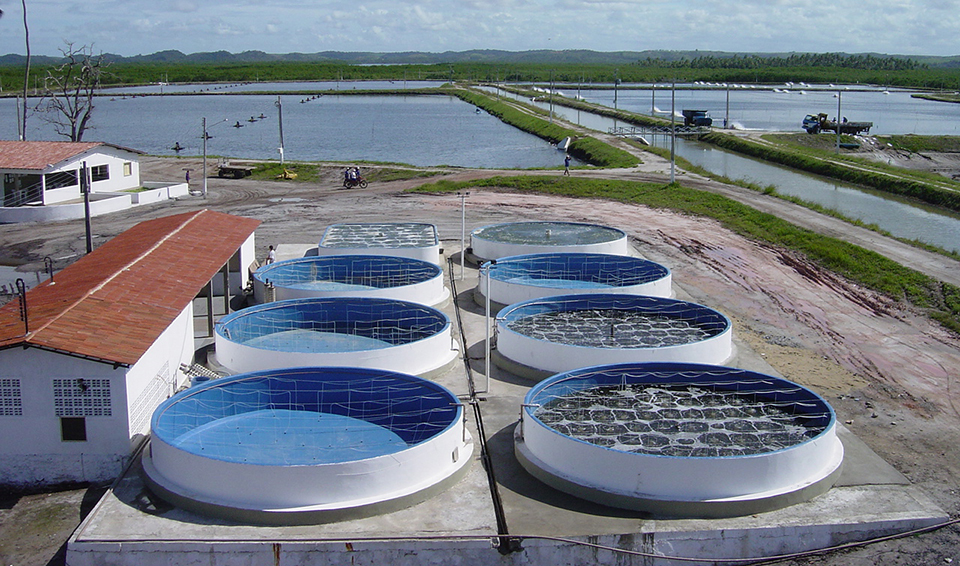
Health & Welfare
Brazil’s intensive shrimp nursery systems improve PL management, grow-out ponds
Intensive nursery systems are an extension of hatcheries to acclimate postlarvae to farm conditions and assess quality and health prior to pond stocking.
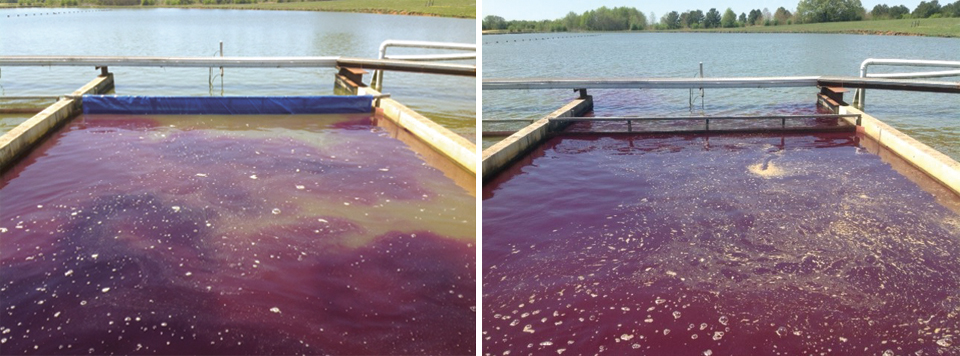
Health & Welfare
Chemical treatment costs reduced with in-pond raceway systems
By dividing ponds into smaller, more controllable areas, IPRS can substantially reduce chemical treatment costs, improve treatment delivery and allow new treatments that are cost-prohibitive in traditional pond settings.

Health & Welfare
Hyper-intensive nursery systems offer advantages for shrimp culture
Hyper-intensive nursery systems for juvenile shrimp production present significant opportunities for shrimp farmers to increase profits. Nursery culture results in strong, healthy and uniform juveniles with great potential for compensatory growth when stocked in production ponds. Nurseries produce a maximum number of juveniles of a desired weight, and their use can reduce production costs by shortening time in growout ponds and increasing pond efficiency through additional cycles per year.
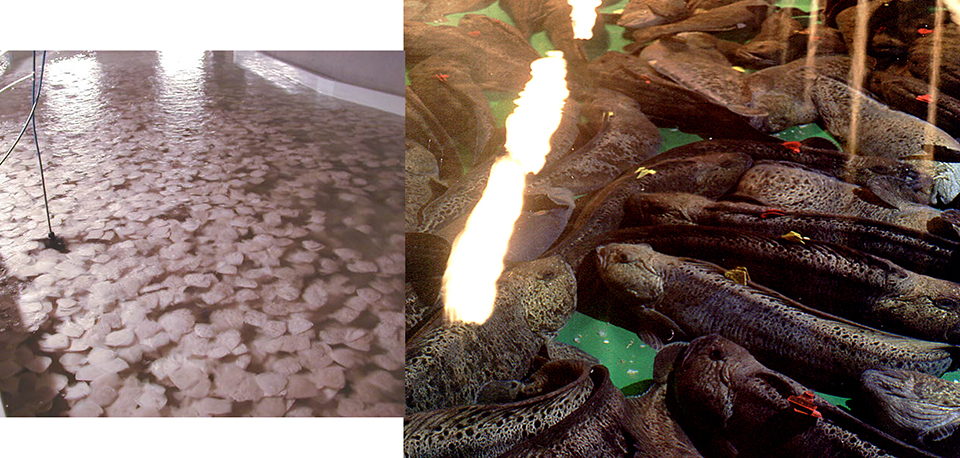
Health & Welfare
Hyperintensive systems produce turbot, spotted wolffish
The development of land-based, hyperintensive farming systems for fish and shellfish production could quickly expand in industrialized countries.


